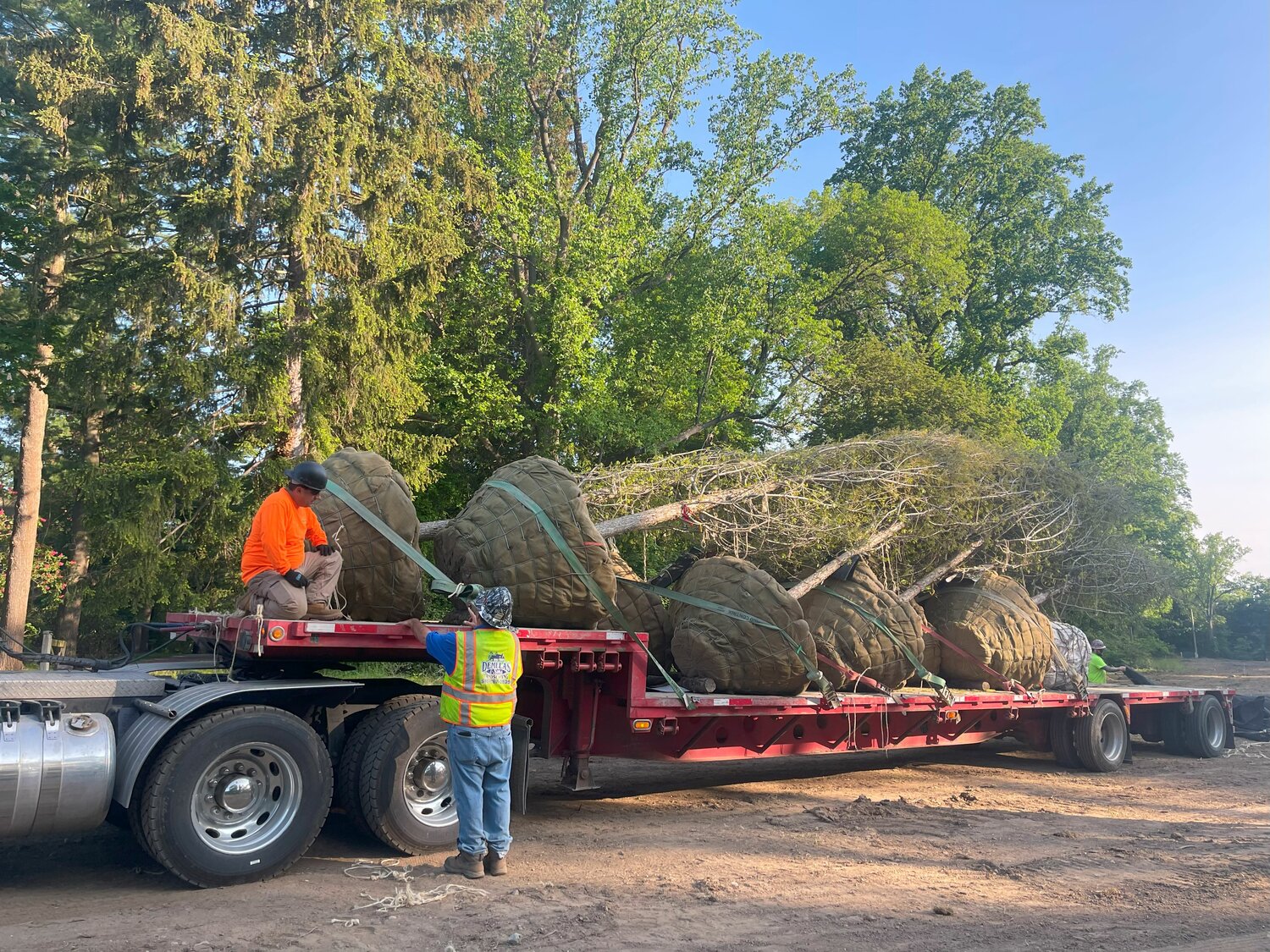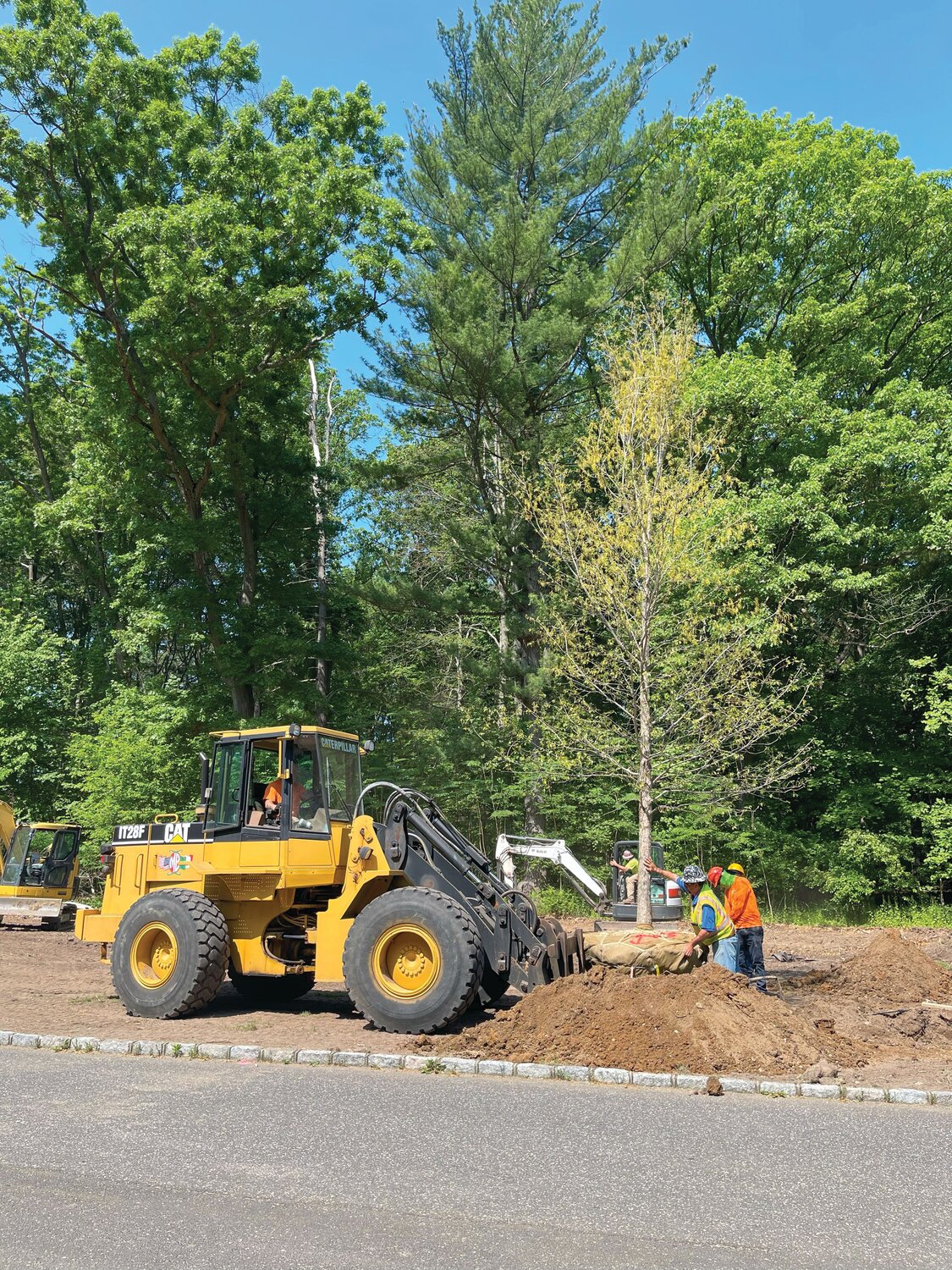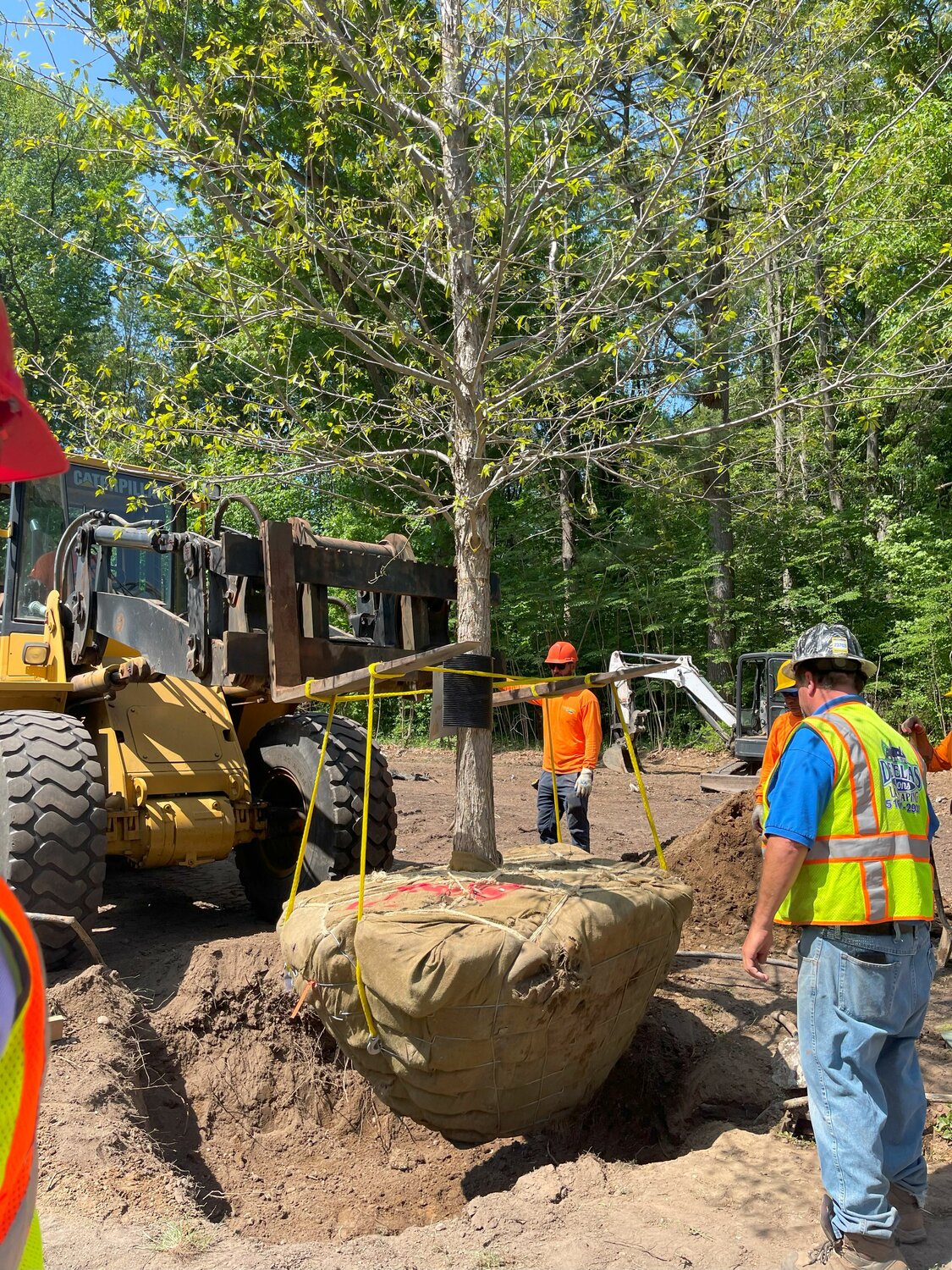Tuesday, April 30, 2024
 56.0°,
Overcast
56.0°,
Overcast
101 oak trees make a grand entrance at Planting Fields Arboretum in Oyster Bay
Planting Fields Arboretum has planted 101 oak trees around the main entrance of the property, part of a sustainable landscaping project intended to beautify the area for decades to come. A part of their capital campaign, which was initiated in 2021, the focus is to “really emphasize and enhance first impressions that guests have of Planting Fields” according to Gina Wouters, the arboretum’s director.
The project was a recreation of a preexisting double allée, or avenue, of beech trees originally planted by the property’s landscape architectural firm, the Olmsted Brothers, which ran on either side of the main entrance driveway. Unfortunately the European beech trees which were originally planted did not work well in the formal garden landscape design, and by 2021 only one remained.
Wouters explained that while efforts had been made 20 or 30 years ago to replace some of the beech trees, the planting had been haphazard and many of the subsequent trees had become sickly as well. Last year the arboretum oversaw the removal of those trees, which had suffered from beech leaf disease, and from May to June this year they planted the replacement trees along the double allée.
“It was a very random planting, and there was no design,” Wouters said. “We’ve been much more aware of what the precedent was and trying to revitalize or even in some cases recreate or bring back the original intent based on original plans from the firm that are available in archives.”
The choice to replace the more exotic beech trees with two oak varieties — white and chinkapin — was a deliberate one, Wouters said. Both oak species are native to New York state and are much hardier and are better able to support local biodiversity.
In addition these trees are exceptionally able to capture and store atmospheric carbon dioxide, a process commonly known as carbon sequestration. This means they help reduce levels of reducing carbon dioxide levels, a small but vital part of reducing global climate change.
“They are like incredible champions in terms of environmental sustainability,” Wouters added. “There’s not a single tree in the world that supports as much biodiversity as oak trees do.”
While the trees are quite young, the oldest being no more than 20, Wouters said that the decision to plant younger trees with the potential to continue growing was also very intentional. Wouters emphasized that these trees were really a gift to the next generation, who in the next 20 to 30 years will get to see them reach their prime.
To help reduce the costs of the endeavor, Planting Fields is also calling on board members, residents and communities to “sponsor a tree,” where for $5,000 people can cover the cost of purchasing the tree, transferring, planting and caring for the tree for the next three years. Thus far 39 of the oaks have been sponsored, and Wouters says that this represents an opportunity for people to leave a legacy for their children and grandchildren to enjoy.
“It’s really about the future,” Wouters said. “This is not about our instant gratification; it’s about legacy and the next generation.”
Anyone interested in sponsoring a tree can visit PlantingFields.org/Oak-Allee/ for more details. For more information contact gmonfiletto@plantingfields.org.
HELP SUPPORT LOCAL JOURNALISM
The worldwide pandemic has threatened many of the businesses you rely on every day, but don’t let it take away your source for local news. Now more than ever, we need your help to ensure nothing but the best in hyperlocal community journalism comes straight to you. Consider supporting the Herald with a small donation. It can be a one-time, or a monthly contribution, to help ensure we’re here through this crisis. To donate or for more information, click here.
Sponsored content
Other items that may interest you











